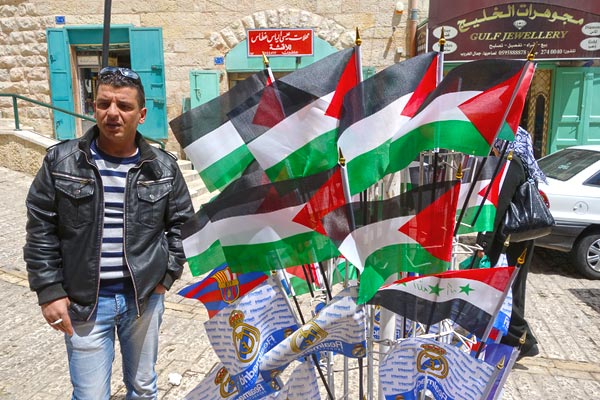Israel has granted a certain amount of autonomy to the Palestinians, but with significant restrictions. The West Bank of the Jordan River, is divided into pockets of land classified into three zones: Areas A, B, and C. The land in Area A, while a relatively small percentage of the geographic area, contains most of the Palestinian cities and towns, and is free — it’s entirely controlled by the Palestinian Authority. The parts designated as Area B are mostly filled with infrastructure surrounding and connecting the islands of autonomy which combine to make Area A. Area B is under Palestine civil authority but is largely off-limits to Palestinian security forces. It’s mostly controlled by the Israeli military and seems to be designed so that if there’s trouble in any island of Area A — for example a terrorist attack emanating from that community — that community can be locked down and isolated in a snap by Israeli troops shutting down Area B. By shutting down Area B, the vast majority of the Palestinian population is bottled up in isolated urban islands throughout the West Bank. Area C, holding most of the West Bank’s uninhabited land, is under complete Israeli authority. While Area C is kind of a part of Palestine, there can be no Palestinian building in Area C without a permit from the Israeli Civil Administration — and that’s usually difficult to get. A problem with Area B is that, since Palestinian security forces can’t really work there and Israel doesn’t care to enforce Palestinian laws, it tends to be a more lawless place…and also serves as a convenient garbage dump.

I was told that the First Intifada led to the Oslo Accords, which established Areas A, B, and C as a transitional arrangement scheduled to be phased out in five years. When the deadlines were ignored, that lead to the Second Intifada (more violent than the first). And all that bloodshed meant the zone system became permanent, and the wall-and-settlement program was implemented.

For Palestinians, living within the strict confines imposed by Israel after the Second Intifada can be frustrating. Both established and “flying” (temporary) checkpoints can make traveling from one Area A community to another very difficult. (Although during my visit, checkpoints seemed unmanned, and traffic was passing through without stopping.) For security reasons, Israel doesn’t allow Google to map the area. There is no reliable mail service between the West Bank and the rest of the world (many Palestinians keep an address with a friend in Jerusalem to work around this — but forget about getting any Amazon.com purchases delivered within Palestine).

While most young people and professionals have smartphones here, there’s no 3G allowed in Palestine. As smartphones need an Internet connection to fully function, nearly every restaurant and café provides free Wi-Fi. Israeli settlements buried deep within the West Bank have 3G, so some Palestinians mooch off of this by getting an Israeli SIM card.

Thank you for telling the truth – and testing the world know that most people on both sides would like better relations and that the wall and separate roads make interaction pretty much impossible.
Bonnie: right. The wall is a lousy way to live. But it keeps Israelis safe from bus bombers, pizza parlor bombers, etc.
As I wrote before, I lived there in the 70s and 80s, when there was no Arafat, and no wall.
The Palis chose their leadership, embraced terror, and now hav to live with the consequences. Bethlehem looks to be pretty prosperous. Lots of nice cars, etc in Ricks movie. Restaurants seem full, and well stocked. Hopefully the world sees that aspect, also. Not too much suffering there. Despite the walls and checkpoints (mostly n manned these days), the Pali economy seems to be thriving.
Yes everyone wants peace and better relations. The question is what is “better?” I think Americans living is a secular, materialistic society fail to appreciate the importance of religious beliefs. Better might be the elimination of a Jewish State of Israel. Respecting women can mean placing them covered so they are not exploited as sex objects as in the West. (Pew poll found that most Muslim women believe that they are better respected in Muslim countries). As we see in Gaza and Egypt, repressive governments can be the will of the people and democratically elected. Democracy is not the same as liberty.
Area C – and to a lesser degree the other areas – has a significant population of Bedouins who have even fewer protections than Palestinians. There is much poverty – difficulty in accessing education and even water.
Yes the security restrictions are frustrating. But the Palestinians and their supports don’t understand basic cause-and-effect. Israelis found it frustrating to see their friends and families bombs. When the bombing stops, so will the restrictions.